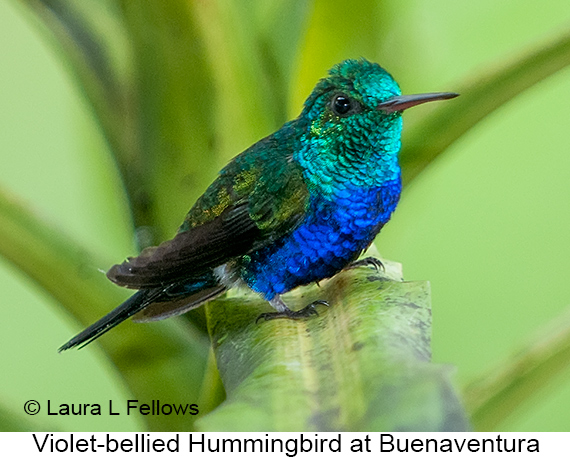Sapphire-bellied Hummingbird
The blue belly Hummingbird ( Lepidopyga lilliae ) is a rare hummingbird that is endemic to Colombia.
Description
The male of the blue belly Hummingbirds reached a size 8.9 to 9.4 cm and a weight of 4.3 grams. It has a short straight beak. The upper mandible is black, the lower mandible is pink with a black tip. The top is blue-green, the underside tired of blue. The throat is iridescent violet. The blue-black tail is deeply forked.
The females have been observed only in recent years. Size and weight and the coloring of the beak are undescribed in the female. The top is glossy green. The coloration of the tail is green black. The underside is mottled grayish and strong. Breast and flanks are glittering blue. Towards the belly the color from fading and goes to the lower abdomen and the under tail-coverts in a plain gray over.
Habitat and behavior
The blue belly hummingbird is endemic in the mangrove forests and in the xeromorphen bush vegetation in the Colombian Caribbean Coast. Its distribution extends over the provinces Atlántico, Magdalena and La Guajira. Most observations are from the National Park Isla de Salamanca and of Cienaga Grande de Santa Marta. His way of life is not yet sufficiently researched. Like other hummingbird species it feeds on insects and nectar apparently.
Status
Mid -1970s was an oil pipeline and a road built through the wetlands of Cienaga Grande de Santa Marta and Isla de Salamanca. This led to the interruption of the natural tidal flow and a massive death of mangrove forests, which lasted until 1992. BirdLife International estimates the population of the blue belly hummingbirds on between 50 and 250 copies. 2007, the species was photographed for the first time. According to IUCN, the kind Critically Endangered ( threatened with extinction ) substance.









